Subcortical input to the smooth and saccadic eye movement subregions of the frontal eye field in Cebus monkey
- PMID: 9364070
- PMCID: PMC6573589
- DOI: 10.1523/JNEUROSCI.17-23-09233.1997
Subcortical input to the smooth and saccadic eye movement subregions of the frontal eye field in Cebus monkey
Abstract
We have recently identified two functional subregions in the frontal eye field (FEF) of the Cebus monkey, a smooth eye movement subregion (FEFsem) and a saccadic subregion (FEFsac). The thalamic input to these two subregions was studied and quantified to gain more information about the influence of the cerebellum and basal ganglia on the oculomotor control mechanisms of the cerebral cortex. A recent study using transneuronal transport of virus demonstrated that there are neurons in the basal ganglia and cerebellum that project to the FEFsac with only a single intervening synapse (Lunch et al., 1994). In the present study, we concentrated on the thalamic input to the FEFsem to define possible basal ganglia-thalamus-cortex and cerebellum-thalamus-cortex channels of information flow to the FEFsem. We localized the functional subregions using low threshold microstimulation, and retrogradely transported fluorescent tracers were then placed into the FEFsem and FEFsac. The neurons that project to the FEFsem are distributed in (1) the rostral portion of the ventral lateral nucleus, pars caudalis, (2) the caudal portion of the ventral lateral nucleus, pars caudalis, (3) the mediodorsal nucleus, (4) the ventral anterior nucleus, pars parvocellularis, and (5) the ventral anterior nucleus, pars magnocellularis. In contrast, the large majority of neurons that project to the FEFsac are located in the paralaminar region of the mediodorsal nucleus. The FEFsac and FEFsem thus each receive neural input from both basal ganglia-receiving and cerebellar-receiving cell groups in the thalamus, but each receives input from a unique combination of thalamic nuclei.
Figures
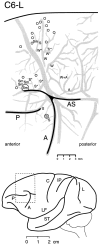
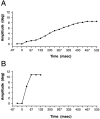

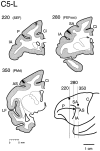


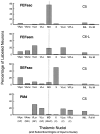
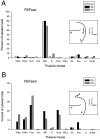
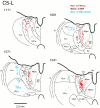

Similar articles
-
Corticocortical input to the smooth and saccadic eye movement subregions of the frontal eye field in Cebus monkeys.J Neurophysiol. 1996 Oct;76(4):2754-71. doi: 10.1152/jn.1996.76.4.2754. J Neurophysiol. 1996. PMID: 8899643
-
Overlap of saccadic and pursuit eye movement systems in the brain stem reticular formation.J Neurophysiol. 2001 Dec;86(6):3056-60. doi: 10.1152/jn.2001.86.6.3056. J Neurophysiol. 2001. PMID: 11731560
-
Functionally defined smooth and saccadic eye movement subregions in the frontal eye field of Cebus monkeys.J Neurophysiol. 1996 Oct;76(4):2740-53. doi: 10.1152/jn.1996.76.4.2740. J Neurophysiol. 1996. PMID: 8899642
-
Connectivity patterns of thalamic nuclei implicated in dyskinesia.Stereotact Funct Neurosurg. 1989;52(2-4):79-119. doi: 10.1159/000099491. Stereotact Funct Neurosurg. 1989. PMID: 2657951 Review.
-
The connections of the primate subthalamic nucleus: indirect pathways and the open-interconnected scheme of basal ganglia-thalamocortical circuitry.Brain Res Brain Res Rev. 1997 Feb;23(1-2):62-78. doi: 10.1016/s0165-0173(96)00018-5. Brain Res Brain Res Rev. 1997. PMID: 9063587 Review.
Cited by
-
Adeno-Associated Virus Capsid-Promoter Interactions in the Brain Translate from Rat to the Nonhuman Primate.Hum Gene Ther. 2020 Nov;31(21-22):1155-1168. doi: 10.1089/hum.2020.196. Epub 2020 Oct 22. Hum Gene Ther. 2020. PMID: 32940068 Free PMC article.
-
The neuronal basis of on-line visual control in smooth pursuit eye movements.Vision Res. 2015 May;110(Pt B):257-64. doi: 10.1016/j.visres.2014.06.008. Epub 2014 Jul 1. Vision Res. 2015. PMID: 24995378 Free PMC article. Review.
-
The Neural Basis for Response Latency in a Sensory-Motor Behavior.Cereb Cortex. 2020 May 14;30(5):3055-3073. doi: 10.1093/cercor/bhz294. Cereb Cortex. 2020. PMID: 31828292 Free PMC article.
-
Spatially distributed encoding of covert attentional shifts in human thalamus.J Neurophysiol. 2010 Dec;104(6):3644-56. doi: 10.1152/jn.00303.2010. Epub 2010 Sep 15. J Neurophysiol. 2010. PMID: 20844113 Free PMC article.
-
Task dependence of decision- and choice-related activity in monkey oculomotor thalamus.J Neurophysiol. 2016 Jan 1;115(1):581-601. doi: 10.1152/jn.00592.2015. Epub 2015 Oct 14. J Neurophysiol. 2016. PMID: 26467516 Free PMC article.
References
-
- Alexander GE, DeLong MR, Strick PL. Parallel organization of functionally segregated circuits linking basal ganglia and cortex. Annu Rev Neurosci. 1986;9:357–381. - PubMed
-
- Alexander GE, Crutcher MD, DeLong M. Basal ganglia-thalamocortical circuits: parallel substrates for motor, oculomotor, “prefrontal” and “limbic” functions. In: Uylings HBM, Van Eden CG, Bruin JPC, Corner MA, Feenstra MGP, editors. Progress in brain research, Vol 85. Elsevier; New York: 1990. pp. 119–146. - PubMed
-
- Asanuma C, Thach WT, Jones EG. Cytoarchitectonic delineation of the ventral lateral thalamic region in the monkey. Brain Res. 1983a;286:219–235. - PubMed
-
- Asanuma C, Thach WT, Jones EG. Distribution of cerebellar terminations in the ventral lateral thalamic region of the monkey. Brain Res. 1983b;286:237–265. - PubMed
-
- Asanuma C, Thach WT, Jones EG. Anatomical evidence for segregated focal groupings of efferent cells and their terminal ramifications in the cerebellothalamic pathway of the monkey. Brain Res Rev. 1983c;5:267–297. - PubMed
Publication types
MeSH terms
Substances
Grants and funding
LinkOut - more resources
Full Text Sources
Miscellaneous
